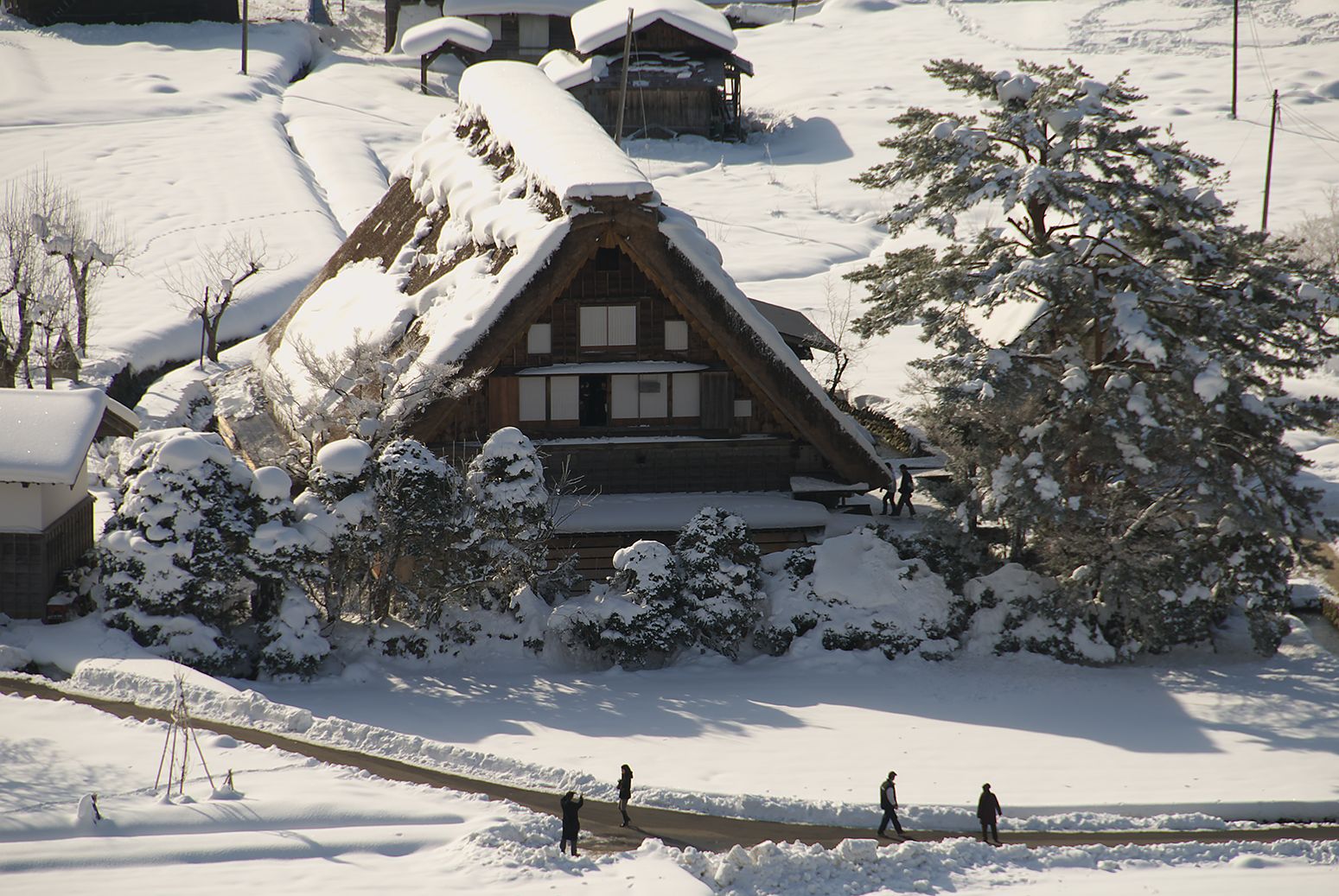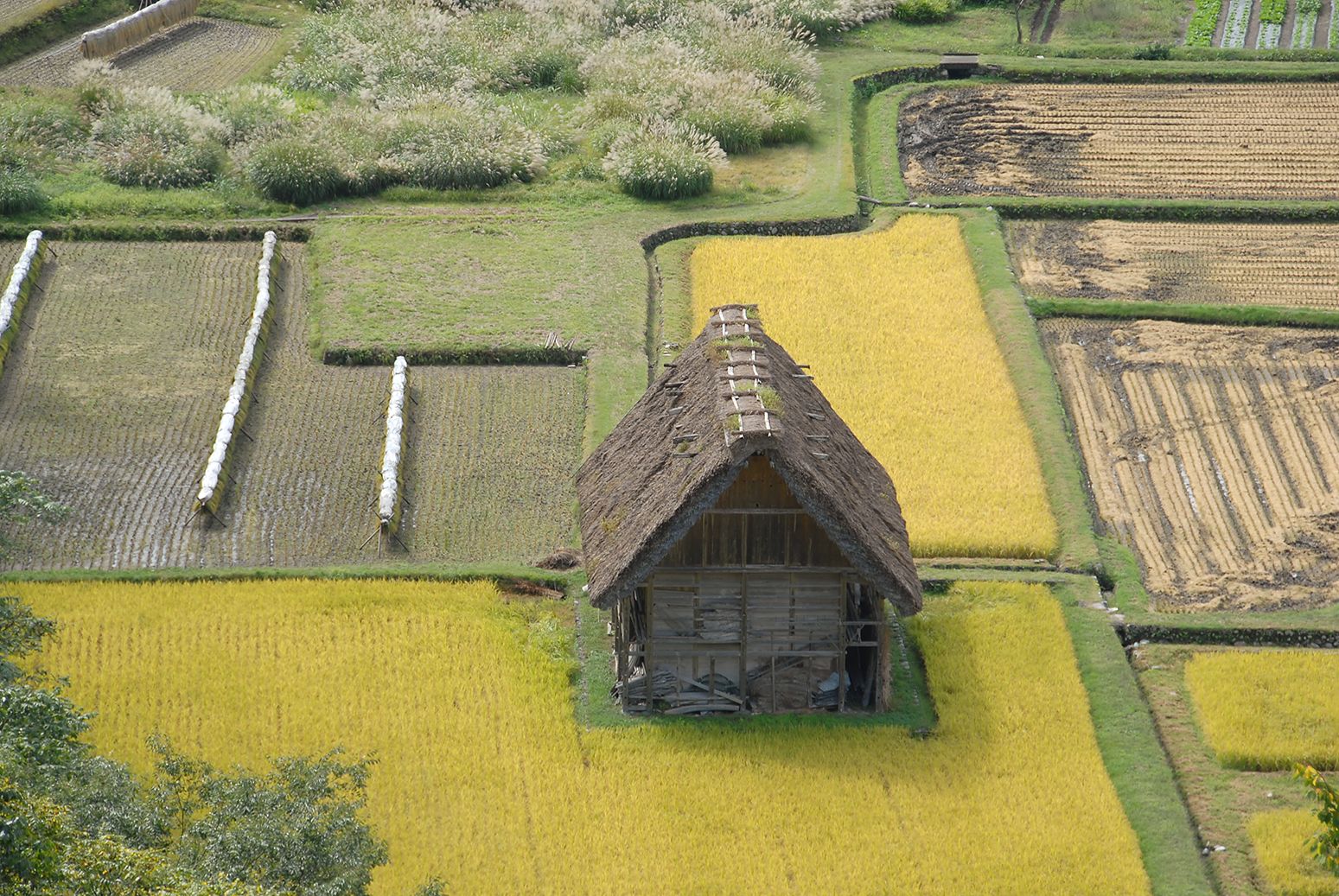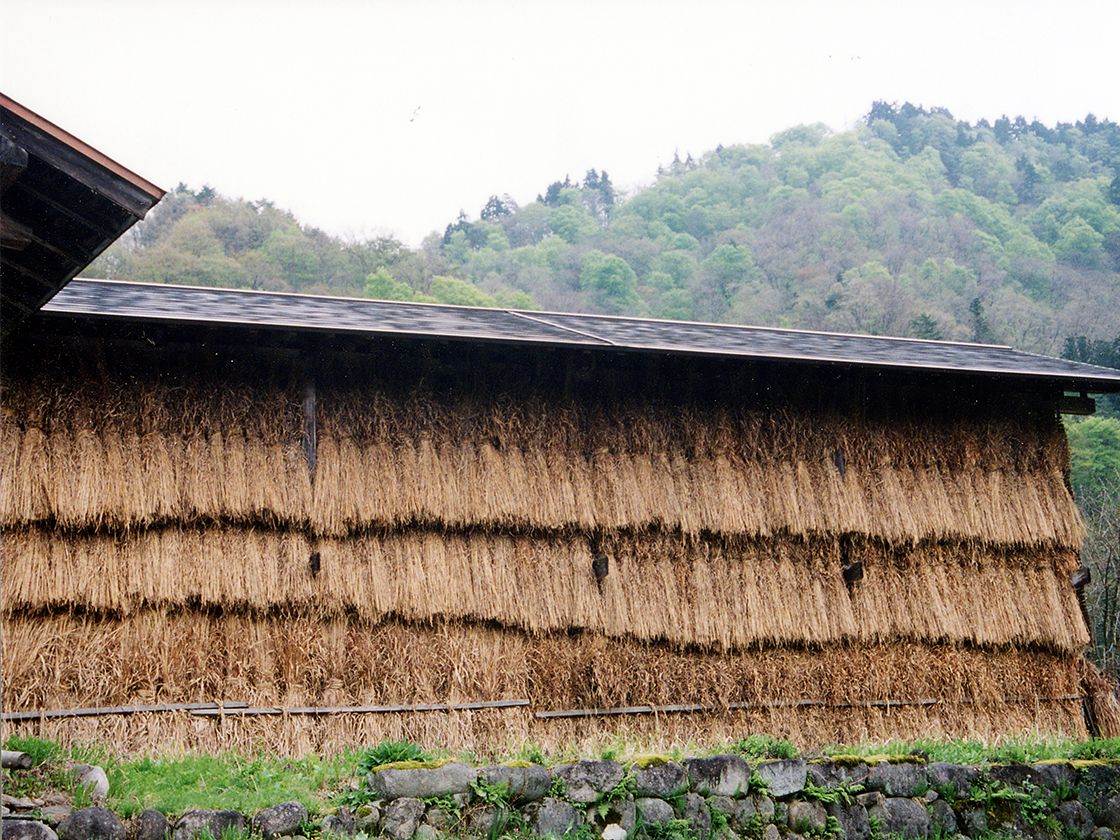白川郷は、白山をはじめ多くの山々に囲まれた美しい郷です。白川郷の家々は、昔から屋根に降った雪が自然に落ちるような急勾配の茅葺屋根を両側から組み合わせた構造で、横から見ると大きな三角形の形をしており、「合掌造り」と呼ばれています。
この地方の昔の産業は焔硝(塩硝)や養蚕が主でした。白川郷の他に、五箇山地区(現富山県南砺市)にも合掌造りの集落があり、白川郷と合わせて1995年に「白川郷・五箇山の合掌造り集落」として世界遺産に登録されました。
合掌造り家屋の特徴は、現在も人々の暮らしが営まれており、村の中で行われる伝統的な行事も受け継がれていることです。その根底には村の人々が相互に協力し合う「結(ユイ)」「合力(コウリャク)」の心が流れています。
合掌造り家屋の維持・屋根の葺き替えや田植え、稲刈りなど労働力を交換し合う「結」という自発的に労働力を提供する「合力」で住民は強いきずなで結ばれています。和田家は古くから名主(庄屋)として村の中心的な存在であり、村の産業のリーダーとしての役割を永年努めてきました。現在でも和田家住宅は地域で最も大きい家屋の一つです。保存されている生活用品、産業に用いる諸道具や建物は昔ながらのものばかりで、近年まで家や村の諸行事で活用され続けてきました。
Shirakwa-go is a beautiful village surrounded by many mountains including Mt. Haku. The houses of Shirakawa-go have steeply pitched thatched roofs so snow falls off the roof easily. They form a large triangular shape when viewed from the side. The structure is called “Gassho zukuri”.
The main traditional industries of this region were gunpowder production and sericulture. Beside Shirakawa-go, there are Gassho-style villages in the Gokayama area (in present Nanto city, Toyama prefecture). These villages were registered as a part of the World Heritage “Historic Villages of Shirakawa-go and Gokayama” in 1995.
One special characteristic of Gassho-style houses is that even now people live in them. The traditional events held there in the villages were all inherited. Indeed, the local spirit called “Yui” and “Koryaku”, which is about cooperating with each other, remains in each villager's heart.
The villages are tied together strongly with the spirit of “Yui”, where the villagers spontaneously cooperate and become the central labor force for the maintenance of the Gassho-style houses, rethatching, rice planting and reaping, and so on. Likewise, “Koryaku” is the spirit of helping each other especially when labor is needed. The head of the Wada Family has long been a central figure as the village headman (or present-day mayor) and has worked as a leader of local industry for many years. Even today, the Wada mansion is one of the biggest houses in this area. Even the old tools such as those used in daily life and those use in the sericulture industry can be found here. They have been preserved so well, that they continued to be utilized in the home and in festivals until recent years.

| |
| 冬の和田家 雪が屋根から自然に落下する 【目録】 The Wada House-Snow falls naturally from the roof. | |

|

|
| 稲架小屋 秋に刈り取った稲を保管 【目録】 Hasa-goya-stores reaped rice plants in Autumn. | 板蔵 屋根を葺き替えるための茅や農機具を保管 【目録】 Ita-gura-stores agricultural tools and bunches of pampas for reroofing. |

| |
| 【目録】 | |
和田家の広い敷地の中に屋根の茅を保管する板蔵と稲架小屋があります。どちらも20年~30年ごとに屋根を葺き替えるために茅場(茅が生えている場所)で育てた茅を毎年刈り取り保管しています。稲架小屋には、秋に刈り取った稲を稲架にかけて一時保管します。
このような、住で大切な茅と生活に必要な稲を保管する建物が敷地の中にあります。
The Wada house, with its spacious ground, has an Ita-gura, which stores pampas grass to be used roofs, and a Hasa-goya. Both store cut pampas grass, which will be used for reroofing, done every 20-30 years. A Hasa-goya temporarily stores the reaped rice stalks which are hung out for drying over racks, called Hasa, in Autumn.
In this way, within the site, there are storage locations to preserve both rice stalks, which are necessary for daily life, and cut pampas grass necessary for the houses.
